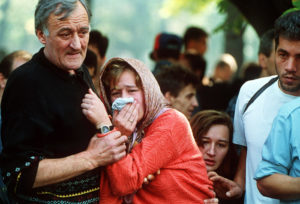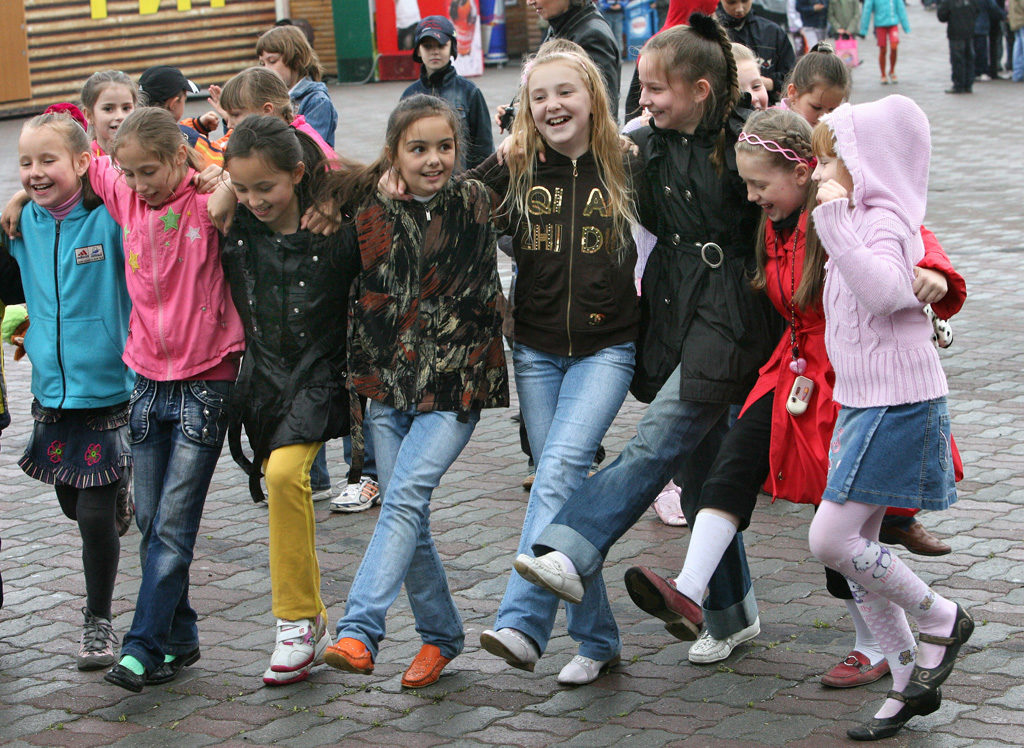August 19th, 2016
#OrlandoStrong #EndGunViolence
Kashif Shaikh, MD

Kashif Shaikh, MD, is the 2016-17 Chief Resident in Internal Medicine at the University of Central Florida College of Medicine.
I will never forget Sunday morning, June 12. I was off that day. I usually sleep with my cell phone on silent mode, and I slept late after binge watching some movie marathon the night before. I was still half asleep when I picked up my cell phone to see what time it was — but what I actually saw on my phone was a jumble of texts from friends and loved ones. I knew instantly that it wasn’t a good news. I opened the first text from a friend: “Are you okay? I am worried about you. I am very sad to hear about Orlando.” I thought at first that my friend was referring to Christina Grimmie’s heartbreaking incident, in which she lost her life at an Orlando concert. But that didn’t seem right — my friends wouldn’t be worried about my personal safety in relation to that event.
I had to swipe my phone for some news. The news that I read will haunt me for the rest of my life. The feeling that I had reminded me of the dementors that J.K. Rowling describes in her book. For the very first time, I understood the meaning of soul-sucking creatures. I felt as if every happy feeling literally was sucked out of my soul.I turned on the TV. I was in a state of shock. I was in denial. I thought that this couldn’t be real, that this was just a nightmare, and that I was probably still asleep. It couldn’t be happening here. But, no, it WAS real. I lost my appetite. I couldn’t sleep well for the next few days.
I watched Anderson Cooper’s coverage on the news. He was saying the names of the people who lost their lives, one by one. It was the most heartfelt coverage I have ever seen from a television journalist. It took me back to the tragedies of Sandy Hook, Charleston, and San Bernardino.I am still very upset when I think of how anyone, any lunatic, can buy guns without a background check. Right after the Pulse incident, when I stopped at a gas station, I saw advertisements for gun shows. Gun sellers were trying to take advantage of this whole situation. It was shameful. There was no respect for the victims who lost their precious lives.
![By Tony Webster from Minneapolis, Minnesota, USA (Stop Gun Violence) [CC BY 2.0 (http://creativecommons.org/licenses/by/2.0)], via Wikimedia Commons](https://blogs.jwatch.org/general-medicine/wp-content/uploads/sites/4/2016/08/Stop_Gun_Violence_Sad_Face_Sign-300x200.jpg)
By Tony Webster from Minneapolis, Minnesota, USA (Stop Gun Violence) [CC BY 2.0], via Wikimedia Commons
Gun violence is a public health issue
The morbidity and mortality associated with gun violence is a serious problem. In a 2014 paper by Braga et al. about focused deterrence on the prevention of gun violence, the authors stated, “Public health researchers and practitioners have historically prevented many deaths and illnesses by applying public health’s fundamental problem-solving capacity to develop actions such as water quality control, immunization programs, and food inspection regimes.”
In another review, from 2010, Narang et al. noted that access to guns affects risk for death and gun-related domestic violence. Narang et al. based their review on data from the Centers for Disease Control and Prevention and National Center for Injury Prevention and Control, and Internet-based injury statistics: They found that high prevalence of guns is associated with high rates of suicide, accidental injury, homicide, and domestic violence. Suicide is the leading cause of death among gun owners in the initial years of acquisition. According to the authors, “Out of 395 fatalities occurring at a family home where a gun was present, suicide accounted for 333 cases (84%); 41 were domestic violence homicides, and 12 were accidents, while only nine were shootings of an intruder.”
Do guns make others safe?
Presence of a firearm in the home reportedly results in death or injury to household members or visitors over 12 times more often than to an intruder. Trauma centers receive many people with gunshot wounds said to be “accidents,” but circumstances in some of these cases indicate that they initially were stress-related shootings, done with an intent to die. Self-inflicted gunshot suicides outnumber both homicides and fatal accidents combined.As Narang et al. note, guns are the most commonly used weapon in domestic homicides, accounting for about 65% of all such deaths. Risk for intimate partner homicide is increased by fivefold. Gun ownership results in loss of life to women by suicide three times more often than where no such weapon is available.
The most remarkable statistic this review mentions is, “In 2005, it was documented that 5,285 US children were killed by gunshots according to data collected over a full year time period by the Centers for Disease Control; compare this to none in Japan, 19 for Great Britain, 57 in Germany, 109 in France, and 153 in Canada.”
This study also talks about how the consequences of gun-related violence, death, injury, disability, and/or dysfunction have a powerful effect on our society and healthcare system. Loss of loved ones, economic hardship, and psychological trauma is devastating. Bereavement compromises the quality of life, specially for children. It results in spread of fear in communities. It also affects medical costs, which indirectly affects the general population, government, and the healthcare delivery system.What is the cost?
According to Narang et al., “In 2005, approximately 30,000 Americans died of gunshots and nearly 70,000 received emergency treatment for nonfatal wounds. Emergency facilities are constantly burdened by the services required in such traumatic events. Medical care for these patients costs up to $4 billion per year. The overall economic cost due to these injuries in America, including healthcare, disability, unemployment, and other intangibles is about $100 billion per year.” This study also mentioned the case-to-fatality rate for gunshot trauma. It is about 30%, which is much higher than for other injuries. Death occurs following a shooting 18 times more often than after motorcycle accidents. Moreover, the hospital stays for patients with gunshot injury are in the range of nearly 2 weeks’ duration. The disability from such events averages approximately half a year. This affects taxpayers. Each homicide results in approximately $244,000 of incarceration expenses for our taxpayers.
In Kentucky in 2008, 73% of gunshot victims were uninsured, 10% were covered by government plans, and 17% were privately insured. Nationally, data reported in 2001 documented that government programs pay for about 49% of this amount, 18% is covered by private insurance, and 33% by all other sources.
 Gun violence costs about 2.4 billion dollars annually to the criminal justice system in America. Local governments across our country spend up to $100 million each year just on bulletproof vests. Most of these bills are then passed on to the taxpayers. Why have no reforms been introduced after the mass shootings involving Sandy Hook, Charleston, and San Bernardino? What new laws could have potentially prevented the mass shooting at Pulse Orlando?
Gun violence costs about 2.4 billion dollars annually to the criminal justice system in America. Local governments across our country spend up to $100 million each year just on bulletproof vests. Most of these bills are then passed on to the taxpayers. Why have no reforms been introduced after the mass shootings involving Sandy Hook, Charleston, and San Bernardino? What new laws could have potentially prevented the mass shooting at Pulse Orlando?
The U.S. has the highest rate of firearm homicides amongst developed countries
With less than 5% of the world’s population, the United States has 35%-50% of the world’s civilian-owned guns. As of now, no federal laws ban semiautomatic assault weapons, military-style 0.50 caliber rifles, handguns, or large-capacity ammunition magazines. In fact, gun sales increase exponentially after deadly mass shootings. Everyone knows how easy it is to obtain guns in the United States in the name of the Second Amendment.
Japan which has the lowest firearm homicide rate (1 in ten million) in the world. Here is how Japan does it. Most guns are illegal, and ownership rates are low. Japan’s firearm and sword laws only permits shotguns, air guns, guns that have research or industrial purposes, or guns used for competitions. Before you can obtain such a weapon, you must obtain formal written instructions and pass a battery of written, mental, and drug tests and a rigorous background check. Furthermore, owners must inform the authorities of how the weapon and ammunition are stored and provide the firearm for annual inspection.
Then of course, there is an example of Australia’s Port Arthur massacre of April 1996, after which Australia prohibited automatic and semiautomatic assault rifles, stiffened licensing and ownership rules, and instituted a temporary gun buyback program. Since then, there have been no mass shootings in Australia.
Gun violence is a public health epidemic that is on the rise. The AMA has called gun violence a public health crisis. It vows to overturn a decade-ban on studying gun violence research by the Centers for Disease Control and Prevention. The NRA opposed the assault weapons ban in 2013, because, according to CNN Money, “the organization’s overall revenue, which includes membership dues, program fees and other contributions, has boomed in recent years — rising to nearly $350 million in 2013.” According to a 2012 Forbes article, “Over 50 firearms-related companies have given at least $14.8 million to the NRA according to its list for a donor program that began in 2005.” In April 2016, Forbes published another article on the NRA. It mentioned, “The gun industry says it has grown 158% since Obama took office. The total economic impact of the firearms and ammunition industry in the U.S. increased from $19.1 billion in 2008 to $49.3 billion in 2015.” More than 17,360 American children and teens are involved in firearm-related injuries every year, and 111,779 people of all ages are hurt annually. One out of 3 homes with children contain firearms, and nearly 1.7 million children live in homes with at least one unlocked, loaded gun, according to the Brady Campaign.
I dedicate this blog to the victims and families of Pulse Orlando, Sandy Hook, Charleston, San Bernardino, and all other gun-violence related mass shootings in the world. I would like to end this discussion on a quote by Albert Einstein:
“The world is a dangerous place to live; not because of the people who are evil, but because of the people who can’t do anything about it.”

![By Justin Higuchi (https://www.flickr.com/photos/jus10h/15728670906/) [CC BY 2.0 (http://creativecommons.org/licenses/by/2.0)], via Wikimedia Commons](https://blogs.jwatch.org/general-medicine/wp-content/uploads/sites/4/2016/08/Christina_Grimmie-236x300.jpg)
![By Crapuipui (Own work) [CC BY-SA 4.0 (http://creativecommons.org/licenses/by-sa/4.0)], via Wikimedia Commons](https://blogs.jwatch.org/general-medicine/wp-content/uploads/sites/4/2016/08/Universal_CityWalk_Orlando_Panorama-1024x303.jpg)


![By Delphi234 (Own work) [CC0], via Wikimedia Commons](https://blogs.jwatch.org/general-medicine/wp-content/uploads/sites/4/2016/08/Children_and_teen_gun_death_rate.png)
![By VOA (http://www.youtube.com/watch?v=gAmr-A-F8K8) [Public domain], via Wikimedia Commons](https://blogs.jwatch.org/general-medicine/wp-content/uploads/sites/4/2016/08/Sandy_Hook-300x201.png)
![AutoCCD assumed (based on copyright claims). [CC BY-SA 2.5 (http://creativecommons.org/licenses/by-sa/2.5)], via Wikimedia Commons](https://blogs.jwatch.org/general-medicine/wp-content/uploads/sites/4/2016/08/Candles-300x200.jpg)
![By Jmaaks (Own work) [CC BY-SA 4.0 (http://creativecommons.org/licenses/by-sa/4.0)], via Wikimedia Commons](https://blogs.jwatch.org/general-medicine/wp-content/uploads/sites/4/2016/08/GunViolenceVictimsComic-1024x724.jpg)
![Ferdinand Schmutzer [Public domain], via Wikimedia Commons](https://blogs.jwatch.org/general-medicine/wp-content/uploads/sites/4/2016/08/Einstein-228x300.jpg)

I’m very sorry for the loss of lives from gun or any other violence. However, this post illustrates part of the reason why the problem is not improving with no good solutions in sight. There is little that connect the Sandy Hook and Orlando events and treating them as if they might have the same solution is an error. Suicides, inner-city gang violence, lone-wolf Islamist terrorism, and mental illness related shootings are not the same thing and should have different solutions developed for each. Most of the gun crimes cited in this blog involve gun deaths are not from active shooter events. The Orlando shooter had passed at least one background check – he had worked as a security guard – and had trained to use a weapon. Increasing background checks and mandating gun training would not have deterred the shooter. Even if Congress could be convinced to pass an Australian type law to confiscate weapons, lots of people would not turn them in and even if 90% of weapons were taken away, there would still be millions of guns available. As Paris has discovered, bad people will find ways to cause death and destruction despite weapon bans. The assault weapons ban wasn’t really effective in lowering crime and banned a lot of things that were actually cosmetic and did not make the gun more lethal and thus not surprising that it wasn’t effective. By the way all weapons, including baseball bats and fists, are capable of “assault” making the term meaningless. The cartoon above implies the NRA is blocking research into gun violence and there is some limits to what kinds of research can be done to avoid the issue being politicized. However, this apparent lack of research hasn’t stopped the blog from quoting a lot of studies and implied lots of solutions for things that apparently have not been studied. It would be much easier to study as well as to get Congress to sign off on a reversal of these restrictions if we did a study to improve mental health access, decrease deaths of children from drive-by shootings, or decrease shootings by radicalized Muslims instead of just saying we should decrease gun deaths. I am sorry that Dr. Shaikh is hurting, like the rest of us are, but grouping these shootings into one big cause and looking for one big answer is unlikely to generate any meaningful solutions and unlikely to reduce these tragic deaths.
In the same way that no policy will prevent ALL gun violence, the policies that Dr. Shaik, the AMA, institutions like the Bloomberg School of Public Health, and the authors of all the cited papers advocate would lead to a significant reduction in gun violence OVERALL. There are always situations we can’t predict and that’s the cost of living in a democracy, but using smart strategies to reduce the problem in many respects make sense. However, what stood out to me was that the author emphasized accidental and non-violent gun injuries. This is important. In the emergency department where I practice, I see as many accidental gunshot patients as I do victims of gun violence. Occasionally even teenagers, and sadly, a few children each year. People often ignore this deadly externality of widespread firearm access and improper regulation/training of gun owners.
I appreciate the article and time and meaning that went into it. I see what Australia did, the success they have had, I and I cringe that we, as a country somehow think that the second amendment means individuals should have access to assault rifles, and guns only designed to kill the maximum number in the minimum of time.